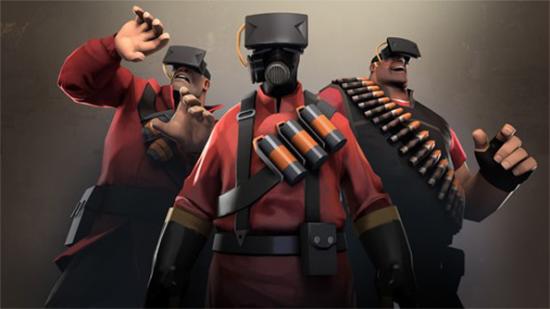Valve aren’t your average competitor. As the proliferation of early Steam Machines has shown, they’re more concerned about improving the lacklustre state of PC hardware than in locking it down with their own premium tech.
So it was that, armed with the most promising goggles on the fledgling VR hardware market, Oculus lately found themselves invited to Bellevue. There, Oculus CEO Brendan Iribe tried on the latest iteration of Valve’s own prototype – and left with a better idea of how to improve the consumer version of the Rift.
“We’ve said before that delivering the most comfortable VR experience is a key focus here at Oculus, and tech advancements are bringing us closer to the Holodeck,” said the hardware developers in a Kickstarter update onVirtual Reality’s Bright Future. “Luckily for us, Brendan has always been very sensitive to visual errors, which makes him an ideal subject for testing the latest demos.
“At [recent San Francisco event] Gaming Insiders, Brendan talked about using a new VR prototype at Valve, which combines ultra low latency, precise head and positional tracking with low-persistence visuals for one of the most immersive and comfortable experiences ever,” they went on.
“We can’t share all the details yet, but we’re taking the insights we’ve learned from that demo and applying them to the development process to make the consumer Rift even better.”
In his most recent blog entry posted at the end of July, Valve VR wizard Michael Abrash talked about the company’s struggle with ‘judder’ – a mix of smearing and strobing that can notably reduce visual quality in VR displays.
The easiest solution to judder would be a near-infinite framerate – clearly an impossibility without dialing back VR gaming to 2005-era visuals (“That’s not to say 2005-level graphics couldn’t be adequate for VR,” mused Abrash. “After all, they were good enough for Half-Life 2”). Instead, Abrash has reduced the length of time each pixel remains illuminated on screen, bringing about the ‘low-persistence’ visuals Iribe mentions.
“The smear part of judder results from each pixel moving across the retina during the time it’s lit, due to eye motion relative to the display,” explained Abrash. “It’s actually not the fraction of a frame for which pixels remain lit that determines the extent of the smearing, it’s the absolute time for which pixels are illuminated, because that (times eye speed) is what determines how long the smears on the retina are.”
Low-persistence visuals are just the latest fix Abrash and team have come up with to solve a series of problems with VR perception. With every solution, he says, another issue has been uncovered.
“Fortunately, it does seem like the scale of the problems is decreasing as we get farther down the rabbit hole,” he wrote. “Although diagnosing the causes of the problems and fixing them seems to be becoming more challenging at the same time.”
Thank goodness, then, that the leading lights in VR design are putting their heads together, sharing and discussing their innovations, rather than locking horns. Between Palmer ‘Lucky Palmer’ Luckey, Carmack and Abrash, we should be on that holodeck in no time. What do you reckon?
